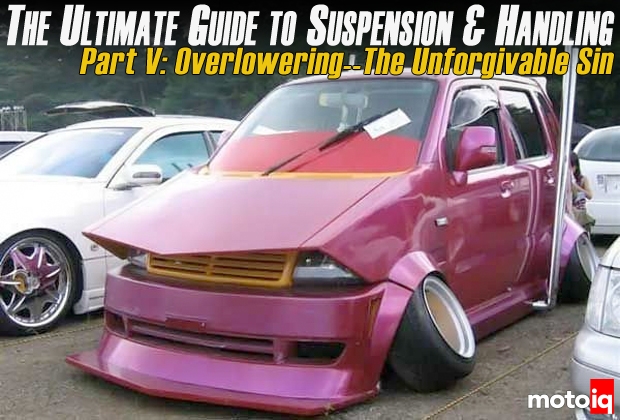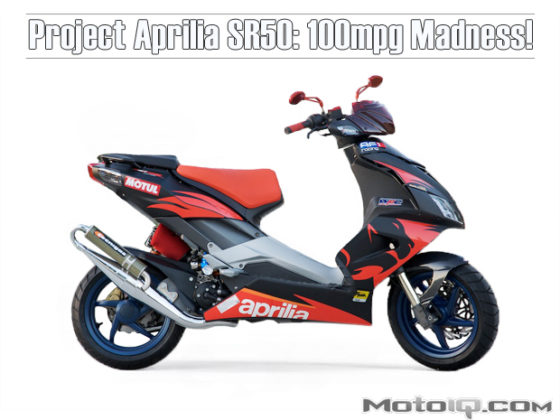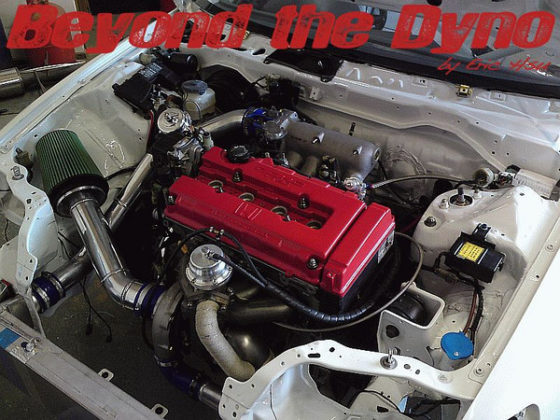,
Many might argue that the lower CG of the lower ride height makes the car handle better due to reduced weight transfer but for sure, infinite spring rate on the outside wheel causes way more weight transfer in the wrong direction low CG or not, this sucks.
 |
| On cars with McPherson Strut suspension, the suspension loses negative camber under roll when the car is lowered to the point where the angle of the lower control arm to the strut is more than 90 degrees. This causes a loss of grip. A general rule of thumb is that if the arms are pointing upward, it's probably not good. |
Wait, it gets even better. On the SE-R the lower control arms are positioned so that they start pointing upwards towards the wheels as soon as the car gets lowered more than just a little bit. Guess what? Now with your lowered SE-R, the camber starts getting positive as the car rolls, causing the tire to get up on its outside edge. This is not an effective use of your tire.
 |
| Notice what else happens when you lower a car too much without correcting the geometry. The roll couple gets longer. The roll couple is the distance between the roll center and the center of gravity. This is the lever arm that centrifugal force works about to create a tipping force to roll the car over in a turn. When the car gets lower, the lever gets longer and there is more force wanting to lean the car on its side. More tendency to roll and less wheel travel could mean trouble. |
More bad things happen as well. As soon as the lower control arms start to point upward, the instant center (the imaginary point in space that the car rolls about) starts to drop rapidly and the roll couple (distance between the roll center and the center of gravity, this is the lever that centrifugal force works upon to roll the car over) greatly increases, it increases faster that the center of gravity drops due to the lowering. The bigger roll couple causes more body roll making everything worse.
 |
| The phenomina of incresed roll couple happens with unequal lenth A arm suspension as well, as illustrated here. |
Finally as the control arms point upward, the steering tie rods start to point upwards much more rapidly because they are shorter, making them run in a much tighter arc out of plane with the lower control arms. This cause toe-out when the wheels deflect making the car twitch, especially when a single wheel bump is hit.
 |
| This picture illustrates ideal link placement for zero bumpsteer on a MacPherson strut suspension. Unfortunately most production cars are not exactly like this so they have bumpsteer under roll and compression. Usually bumpsteer is designed to at least be minimal close to stock ride height. When the car is lowered alot, the relationship of everything gets out of place and bumpsteer because really bad which makes the car feel squirrelly and unstable. On a Nissan Sentra for instance the bump steer is nearly as great as the wheel travel when the car is lowered more than an inch. |
 |
| This picture illustrates ideal link placement for zero bumpsteer on an unequal length A arm suspension. Over lowering this type of suspension can cause lots of bumpsteer for the same reasons as the Mac strut but sometimes even worse. |
These issues make a lowered SE-R a slow machine on the track if the lowering is done with parts designed for the demands of the market instead of what works. Unfortunately, this situation is not unique to the Sentra. The Neon is even worse for many of the same reasons. Many, many cars out there handle poorly with lowering springs. Most performance enthusiasts drive around blissfully unaware that their wonder-lowering job has actually reduced road holding and slowed their cars around a road course, skid pad or autocross. Fortunately for the market, many enthusiasts will never test their cars savvy in a competitive event.



